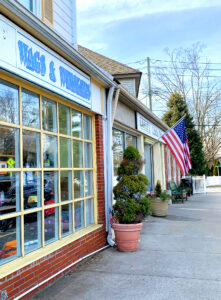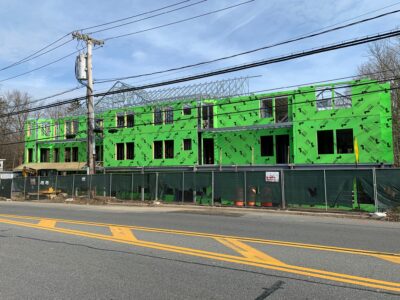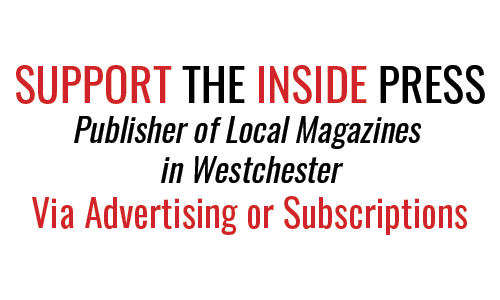
People like to live in places that have walkable downtowns. But the reality is that online shopping has impacted many local merchants significantly, and if the hamlet of Chappaqua is going to thrive, town planning must ensure the area is kept vibrant as it faces modern pressures.
The Town of New Castle has had a new comprehensive plan since 2017, and many of the action items provided for in the plan are now underway. One of these is the adoption of a new type of zoning code, which may happen this fall. The code, Sabrina D. Charney Hull, director of planning for the Town of New Castle, said, aims to provide a framework for making many positive changes to the hamlet of Chappaqua that residents have requested.
“I’ve been working for the town for seven years and part of my job is to update the town’s comprehensive plan,” Charney Hull said. The last comprehensive plan New Castle had was completed in 1989 but was never formally adopted. It’s a tremendous undertaking, and the time had come to move forward with creating a new one.”

“My responsibility was to update the Comprehensive Plan in an efficient and timely manner,” Charney Hull said. In 2014, New Castle contracted with the Pace Land Use Law Center to canvass the community with a survey, to find out what residents wanted for their town. There were also public meetings and other means of outreach. “You name it, we did it,” Charney Hull said.
Diverse Housing Stock Needed
Overall the feedback indicated, besides other things, that New Castle residents wanted a revitalization of the town’s hamlets, including a walkable, livable, eco-sustainable downtown Chappaqua. Residents indicated that while they highly valued open spaces and their single-family neighborhoods, they also wanted a greater diversity of housing stock to provide more options for residents to downsize once they had raised their families, and to enable more young people to live in Chappaqua. This is particularly important for town services dependent on volunteers, like the fire department and ambulance corps. “There’s a record low in volunteering because there’s no population to volunteer,” Charney Hull explained.
These responses and more were incorporated into the town’s 2017 comprehensive plan, which aims to recognize and respond to the many changes that have taken place that impact the town since the last plan. Among these are the internet, which has changed shopping habits drastically. Merchants need more foot traffic to overcome online competition.
Additionally, “as millenials’ (the younger generation’s) economic self-sufficiency increased and the baby boomers (older generation’s) age, these populations are becoming more interested in amenities, housing, services and entertainment options that are accessible without a personal vehicle or through public transit. Also, there is a trend to introduce “healthy living” and “active lifestyles” into everyday actions” (plannewcastle.us/abouttheplan). New Castle residents want to create a “diversity of housing,” Charney Hull said.
The plan also recognizes modern post-9/11 security and disaster/emergency preparedness concerns, as well as modern concerns for environmental stewardship. When the town board adopted the comprehensive plan, the town hall held a full house of supportive residents, Charney Hull said.
Foot Traffic Needed Downtown
When looking to create opportunities for more diverse housing stock, it made sense to look at downtown Chappaqua–it has a train station, it’s connected to town sewer and water. The infrastructure is there, and that’s where merchants need foot traffic.
In neighboring Mount Kisco, efforts are also underway to revitalize the downtown, but there, the village has decided to work with a master developer, while Chappaqua has decided to approach change by considering moving to form-based zoning.
One of “active actions” provided for in the plan is a revision of the zoning code. “Right now we have zoning that’s called Euclidean zoning,” Charney Hull explained. “You zone by use–houses in one area, businesses in another, industrial uses in another area.” That’s how it has been since the 1920s, when that type of zoning was needed for health and safety reasons. However, the kind of zoning now proposed is called form-based zoning.
“We know the existing zoning isn’t conducive to today’s commercial market and we also know we don’t have enough feet on the street,” Charney Hull said. “When creating a walkable, livable environment, the first step is to look at your zoning.”
Defining a Form-Based Code
A form-based code is “a land-development regulation that fosters predictable built results and a high-quality public realm by using physical form (rather than separation of uses) as the organizing principle for the code,” according to the Form-Based Codes Institute. That means that residential and commercial uses may coexist in the same area, while attention is paid to the architectural harmony of the buildings, and how they relate to public spaces such as sidewalks, no matter what they contain. (Of course, Charney Hull pointed out that in downtown Chappaqua, there will be allowable uses–not all uses will be allowed.) Charney Hull said that anyone developing a property in the Chappaqua downtown area will have seven or eight architectural templates they can draw from, which will describe how the detailing on windows, trim boards and so on, should be.
Charney Hull said response from business and property owners in the hamlet has been “very positive.” That’s because “right now it’s not economically viable to re-develop,” Charney Hull explained. “Our existing code at 2-3 stories is not developable.” An expert hired by the town determined that the numbers don’t work–developers won’t be motivated under the existing code. If the proposed new zoning code is adopted in the fall, buildings on Greeley Avenue and lower King Street can be built to four stories.
Merchants Weigh In
Of course, one major part of this plan of action is that there be no net loss of existing parking. “It would be good for the businesses,” Angelo Tradito, owner of the Old Stone Trattoria on King Street, said of the proposed zoning code. “I think it’s better for the town to have more mixed-use… it’ll bring new people to Chappaqua.” While Tradito’s business is on the west side of King Street, farther from the train station and Greeley Avenue, he said he does get some foot traffic currently.
“Not a lot, but some,” Tradito said. There are apartments behind the building housing his restaurant, and a new building going up across the street that Tradito said may bring more pedestrians to his place in the future. However, currently most of his patrons come by car.
Trish Kallman, owner of hip-kid in the heart of downtown Chappaqua, notes that she is in favor of changing the zoning. “I’m for it as long as it’s respectful of the look and feel of the town. I get that people want the beautiful bucolic downtown feel. But it’s not very vibrant right now.”
Kallman said that a change in zoning would benefit people who live in Chappaqua as well as the merchants. “As long as certain things are protected,” she said. “You don’t want it to look like a city.” Patrons of hip-kid generally come by car at this point, although Kallman said it would be nice if new zoning resulted in more downtown residents who could shop there.
Christine Meyer, owner of Wags & Whiskers, is less optimistic about potential future foot traffic if the zoning changes. Meyer’s business is located on the west end of King St, across from Walgreens. Most of her customers come by car. But Meyer did say more foot traffic would “absolutely” be a good thing for the hamlet.
“It’s up to the individual property owners,” Charney Hull said, to determine when existing properties are re-developed under a new code, should it be adopted. It will likely be up for a vote by the town board as soon as the fall. “The community is spearheading this,” Charney Hull pointed out. “It’s what they have asked for, and the town board has been supportive of this process throughout.”
